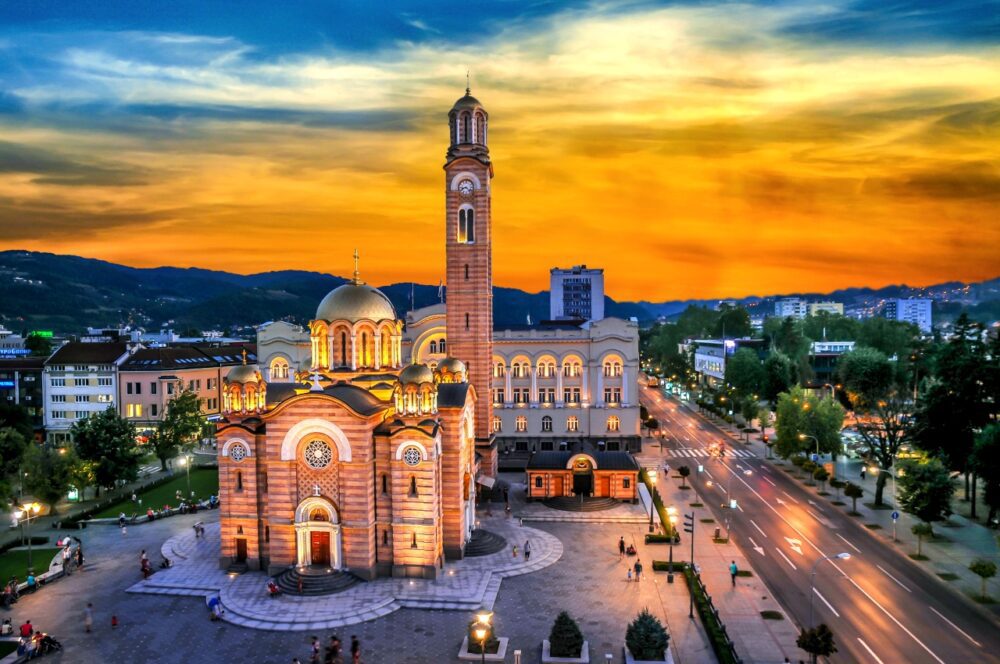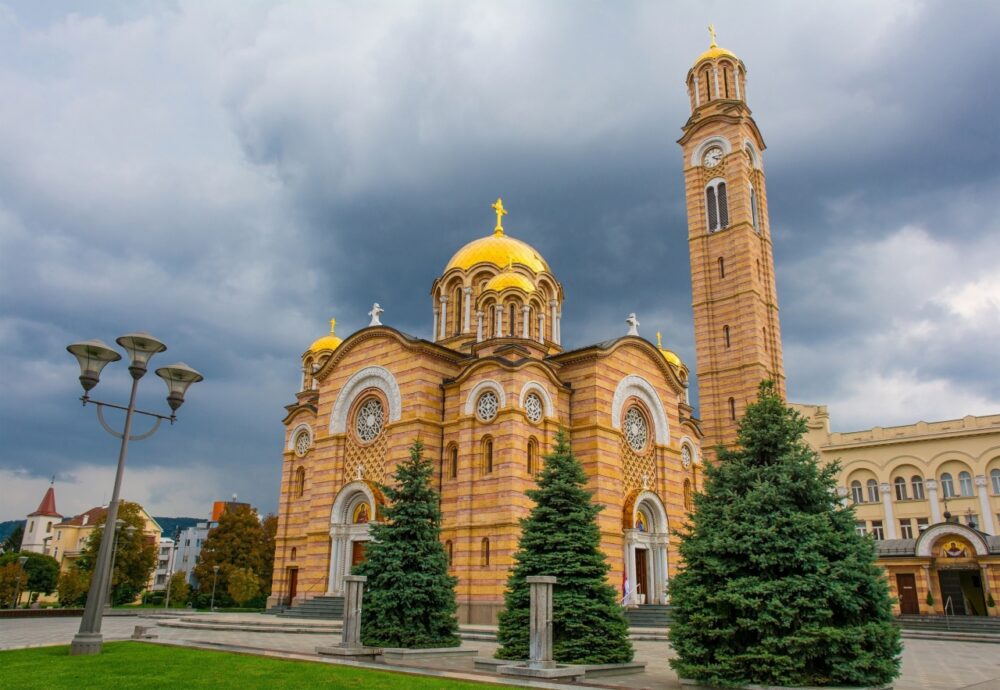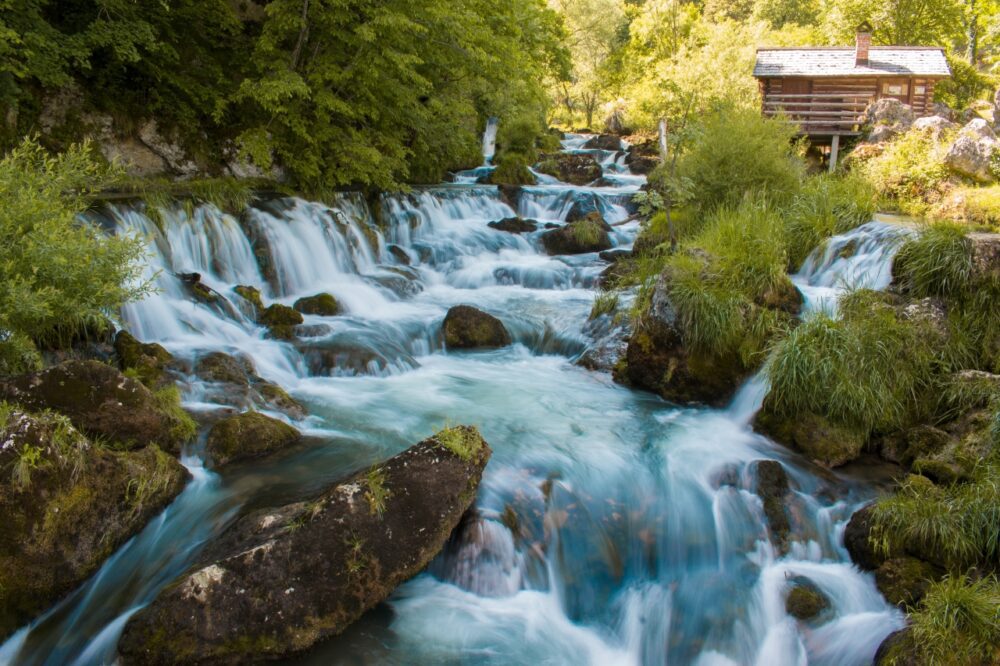
Banja Luka, the second-largest city in Bosnia and Herzegovina, is an intriguing destination that offers a mix of history, natural beauty, and a laid-back vibe. Known for its leafy boulevards, lively café culture, and the iconic Kastel Fortress along the Vrbas River, Banja Luka provides a unique window into the culture of Republika Srpska. Whether you’re kayaking through the Vrbas Canyon, exploring the city’s historic sites, or enjoying delicious local cuisine, Banja Luka has plenty to offer. But with so many destinations in the region, you might wonder: is Banja Luka worth visiting? In this post, we’ll uncover what makes Banja Luka special and help you decide if it’s the right stop for your trip.
Table of Contents
Pros – Reasons You Should Visit Banja Luka
1. A Less Touristy and More Authentic Balkan Experience
Banja Luka is Bosnia and Herzegovina’s second-largest city, but it remains relatively undiscovered by international tourists. Unlike Sarajevo and Mostar, which see a steady flow of visitors, Banja Luka feels more like a city where you can experience daily life without crowds of tour groups. This makes it an ideal destination for travelers looking for an authentic and relaxed Balkan experience.
I enjoyed walking through the city without the usual tourist hustle—there were no long lines at attractions, no overpriced souvenir shops, and no sense of rush. Instead, I found a welcoming atmosphere where locals were happy to chat, recommend places to eat, and share stories about their city. If you love discovering destinations before they become overly commercialized, Banja Luka is a great place to explore.
2. A Beautiful Riverside Setting Along the Vrbas River
The Vrbas River runs through Banja Luka, providing stunning scenery, outdoor activities, and peaceful walking paths along the banks. The river is particularly beautiful in the summer when the water turns a striking shade of emerald green, and locals gather to relax, fish, or even swim in its cool waters.
I took a long walk along the riverbank, stopping to watch kayakers and rafters navigating the rapids. Later, I found a café with a terrace overlooking the river, where I enjoyed a coffee while listening to the sounds of the water. The city’s connection to the Vrbas makes it a perfect place for those who love both nature and urban exploration.
3. Outdoor Adventures Like Rafting and Hiking Are Easily Accessible
Banja Luka is surrounded by nature, making it a fantastic destination for outdoor enthusiasts. The Vrbas River is one of the best spots in the Balkans for white-water rafting, while the nearby mountains offer excellent hiking trails with panoramic views of the city and countryside.
I signed up for a rafting excursion on the Vrbas and was blown away by the experience. The rapids were thrilling but not too intense, and the surrounding cliffs and forests made for an incredibly scenic ride. For those who prefer hiking, the nearby Banj Brdo hill provides a relatively easy climb and offers a fantastic lookout point over the city. Whether you’re into adrenaline sports or just want to enjoy nature, Banja Luka has plenty to offer.
4. A Relaxed and Green City with Plenty of Parks
Banja Luka is known for its abundance of parks and green spaces, which give the city a peaceful and laid-back atmosphere. Unlike many European cities where green areas are limited, Banja Luka has large, well-maintained parks that are perfect for relaxing, jogging, or having a picnic.
I spent an afternoon at Mladen Stojanović Park, one of the city’s most beautiful green spaces. Families were strolling along the paths, groups of friends were playing chess under the trees, and there was a general feeling of calm that made the park a great place to unwind. If you appreciate cities with a strong focus on outdoor living, Banja Luka’s green spaces are a major plus.
5. A Unique Mix of Ottoman, Austro-Hungarian, and Yugoslav Architecture

Banja Luka’s architecture reflects its diverse history, with influences from the Ottoman Empire, Austro-Hungarian rule, and the Yugoslav era. This blend gives the city a distinct look, where you can find grand neoclassical buildings alongside traditional Ottoman-style structures.
One of the most striking buildings is the Ferhadija Mosque, a beautifully restored Ottoman mosque that was originally built in the 16th century. Nearby, the Orthodox Cathedral of Christ the Saviour stands as an example of Serbian-Byzantine architecture, while Austro-Hungarian-era buildings add a European flair to the city’s streets. Walking through Banja Luka felt like taking a journey through different time periods, with each neighborhood revealing a different chapter of its history.
6. The Local Cuisine is Delicious and Affordable
Bosnian food is known for being hearty and flavorful, and Banja Luka has its own regional variations of classic dishes. The most famous is Banjalučki ćevapi, a unique take on the Balkan grilled meat dish, where the sausages are formed into a connected block rather than individual pieces. Paired with fresh flatbread and chopped onions, it’s one of the best comfort foods in the region.
I tried Banjalučki ćevapi at a small local restaurant, and it was hands down one of the best meals of my trip. The meat was perfectly grilled, and the bread was warm and fluffy. In addition to traditional meat dishes, Banja Luka also has excellent dairy products, fresh pastries, and rich, aromatic coffee. The best part? The prices were incredibly reasonable, making it easy to enjoy high-quality meals without spending much.
7. A City with a Friendly and Welcoming Atmosphere
Banja Luka has a reputation for being one of the friendliest cities in Bosnia and Herzegovina. The locals are warm, laid-back, and genuinely interested in welcoming visitors to their city. Whether you’re in a café, a shop, or just walking through the streets, you’ll likely find people eager to chat and share recommendations.
During my visit, I had several spontaneous conversations with locals who were happy to give tips on where to eat, what to see, and even how to properly drink rakija (a strong Balkan fruit brandy). Unlike in some larger cities where people can be rushed or indifferent, the hospitality in Banja Luka felt genuine and heartfelt.
8. Vibrant Café Culture and a Lively Social Scene
Café culture is a big part of life in Banja Luka, with locals spending hours sipping coffee and socializing in outdoor cafés. The city has countless coffee spots, ranging from modern espresso bars to traditional kafanas where people gather to drink Turkish coffee in small cups.
I loved sitting in a bustling café in the city center, watching people chat, read newspapers, and enjoy the relaxed pace of life. The café culture in Banja Luka is about more than just coffee—it’s a social ritual where people slow down, take their time, and connect with one another. If you enjoy European cities with a strong café scene, Banja Luka will not disappoint.
9. The City is Clean, Safe, and Easy to Explore
Banja Luka is one of the safest cities in the Balkans, with low crime rates and a peaceful atmosphere. The streets are clean and well-maintained, and walking around at night feels just as safe as during the day.
I never felt uneasy while exploring, even when wandering through quieter areas. The city’s layout is simple, and most of the main attractions are within walking distance, making it easy to navigate without the need for taxis or public transport. If you’re looking for a stress-free travel experience, Banja Luka is an excellent choice.
10. A Great Base for Exploring Northern Bosnia and Herzegovina

Banja Luka is well-positioned for exploring some of Bosnia and Herzegovina’s lesser-known but stunning natural and cultural attractions. The surrounding region is full of hidden gems, including waterfalls, monasteries, and picturesque countryside.
I took a short trip to the Krupa na Vrbasu waterfalls, just outside the city, and was blown away by the peacefulness of the area. The old wooden mills, the clear blue water, and the serene hiking trails made it feel like a secret paradise. If you enjoy off-the-beaten-path destinations, Banja Luka is a great base for discovering the beauty of northern Bosnia and Herzegovina.
Cons – Things to Consider When Visiting Banja Luka
1. Limited International Recognition and Tourist Infrastructure
Despite being Bosnia and Herzegovina’s second-largest city, Banja Luka is not well-known internationally, and tourism infrastructure is still developing. Unlike Sarajevo or Mostar, where English is commonly spoken in tourist areas, visitors may find that fewer people in Banja Luka speak English fluently, especially outside hotels and major attractions. Tourist information centers and guided tours are also less common, making it harder to find detailed information about the city.
I encountered this when trying to visit a few lesser-known sites—there were no clear signs or brochures in English, and I had to rely on online research and asking locals for directions. While people were always helpful, it sometimes took extra effort to communicate. If you’re an independent traveler who enjoys figuring things out on your own, this isn’t a major issue, but those who rely on guided tours or English-speaking services might find it more challenging.
2. Public Transport is Limited and Not Very Tourist-Friendly
Banja Luka does have a public transport system, mainly consisting of buses, but it’s not very convenient for tourists. There is no metro or tram system, and bus schedules are often unreliable or difficult to find online. Many locals rely on cars or taxis, which are affordable but not always the easiest option for visitors unfamiliar with the city.
I tried taking a bus to reach a site outside the city center, but finding the correct stop and schedule was more complicated than expected. In the end, I opted for a taxi, which was cheap but not ideal for those who prefer public transport. If you’re planning to visit attractions outside the city, such as Krupa na Vrbasu, it’s best to arrange private transport or rent a car.
3. The City is More Business-Oriented Than Tourist-Focused
While Banja Luka has a relaxed atmosphere and beautiful surroundings, it doesn’t have the same level of tourist attractions as Sarajevo or Mostar. The city is primarily a political and economic center, meaning it has more government buildings, corporate offices, and residential neighborhoods than major cultural landmarks or historical sites.
I noticed this when walking through some of the newer parts of the city—there were plenty of shopping malls, offices, and apartment complexes, but not many must-see attractions beyond the central area. While the Old Town, riverfront, and green spaces are enjoyable, visitors looking for an action-packed sightseeing itinerary might find Banja Luka a bit quiet compared to other European destinations.
4. Some Areas Still Show Signs of Post-War Struggles
Although Banja Luka was not as heavily damaged as other cities during the Bosnian War, some areas still reflect the economic struggles that followed. Certain neighborhoods have buildings that look worn down, and while the city center is well-maintained, some parts of the city feel less developed. Infrastructure improvements are ongoing, but visitors may notice contrasts between the modern and older parts of Banja Luka.
As I explored beyond the main streets, I saw a few abandoned buildings and residential areas that seemed in need of renovation. This didn’t make me feel unsafe, but it was a reminder that the city is still evolving. While Banja Luka is growing and modernizing, it doesn’t yet have the polished look of major European capitals.
5. Winters Can Be Cold and the City Lacks a Strong Year-Round Appeal
Banja Luka experiences cold winters, with temperatures often dropping below freezing and occasional snowfall. While the city is beautiful in warmer months, winter doesn’t offer as many activities, especially since it’s not a major ski destination like other parts of Bosnia and Herzegovina. This makes it less appealing for visitors outside of spring, summer, and early autumn.
I visited in late autumn, and while the crisp air was refreshing, some outdoor attractions felt less inviting. The riverside and parks, which are lively in warmer months, were much quieter, and the chilly weather made long walks less enjoyable. If you’re looking for a winter destination, there are better options in Bosnia, such as the ski resorts around Jahorina or Bjelašnica.
When to Visit Banja Luka
The best times to visit Banja Luka are spring (April to June) and autumn (September to October). During these seasons, the weather is mild, ideal for exploring the city’s historic sites, riverside trails, and nearby natural attractions. Summer (July to August) is warm and lively, with festivals like the Vrbas Adventure Race bringing energy to the city. Winters (December to February) are colder but charming, offering opportunities to enjoy indoor cultural attractions or visit nearby ski resorts like Kozara National Park.
How to Get to Banja Luka
Banja Luka is served by Banja Luka International Airport (BNX), located about 23 kilometres from the city centre. The airport offers connections to regional and European cities through airlines like Ryanair and Air Serbia. From the airport, taxis and shuttles provide convenient transfers to the city. For those travelling domestically or from neighbouring countries, Banja Luka is well-connected by train and bus, with regular routes from Sarajevo, Zagreb, and Belgrade. Driving is another option, with well-maintained roads offering scenic views along the way.
Where to Stay in Banja Luka
Banja Luka offers a range of accommodations to suit different budgets and preferences:
- Luxury: City Centre or Near the Vrbas River – Stay at Hotel Bosna, a historic and elegant choice, or Courtyard by Marriott Banja Luka, offering modern comfort and excellent amenities.
- Mid-range: Close to Key Attractions – Consider Hotel Cezar Banja Luka, a stylish boutique option, or Hotel Jelena, known for its convenient location and friendly service.
- Budget: Residential Areas or Hostels – Try Hostel Room, offering affordable stays with a central location, or Guesthouse Tanja, a budget-friendly choice with a homely feel.
Getting Around Banja Luka
Banja Luka is a walkable city, especially in the central areas where attractions like the Kastel Fortress, Trappist Monastery, and Gospodska Street are located. The city bus network is affordable and connects to more distant areas. Taxis are widely available and reasonably priced, though it’s best to agree on a fare or use a metered service. For those seeking eco-friendly options, bike rentals are a great way to explore the Vrbas River trails and nearby parks. Organised tours or rental cars are ideal for venturing further afield to spots like Kozara National Park.
How Long to Spend in Banja Luka
Two to three days is enough to experience Banja Luka’s highlights. Spend your first day exploring the city’s historic landmarks, including the Kastel Fortress, Orthodox Cathedral of Christ the Saviour, and the lively Gospodska Street. Dedicate a second day to outdoor adventures, such as rafting on the Vrbas River or hiking in the surrounding hills. With an extra day, visit nearby attractions like Kozara National Park or the serene Trappist Monastery. Banja Luka’s blend of history, culture, and natural beauty ensures a memorable visit.
Conclusion
So, is Banja Luka worth visiting? Definitely! If you’re drawn to a city with a relaxed atmosphere, stunning natural surroundings, and a hint of history, Banja Luka is a fantastic choice. Its outdoor adventures, friendly locals, and authentic charm make it an appealing destination for travellers looking to explore Bosnia and Herzegovina beyond Sarajevo and Mostar. While it might lack the grandeur of larger cities, its understated beauty and peaceful vibe are part of its allure. For those seeking a mix of culture, nature, and relaxation, Banja Luka is a destination well worth exploring.
